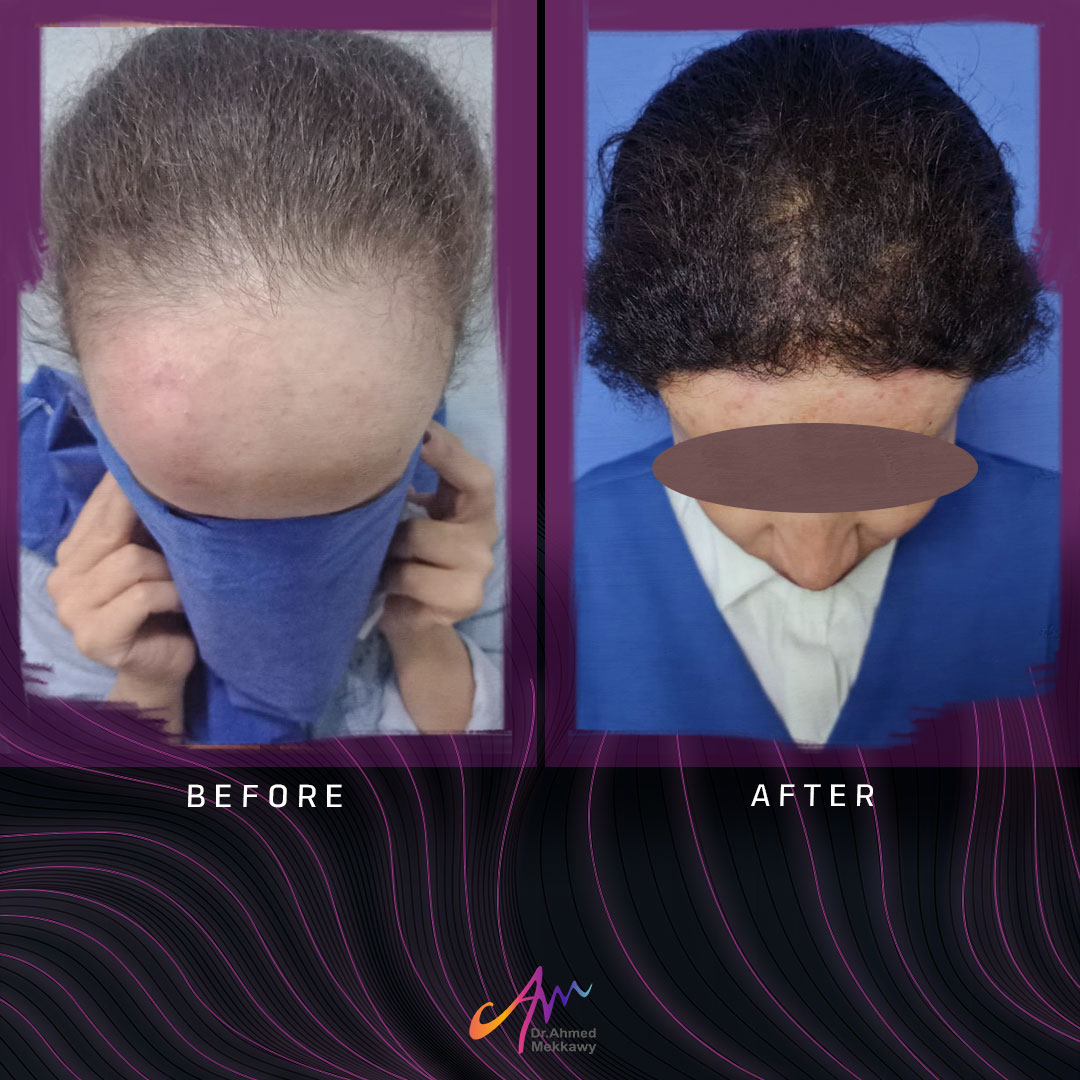
Forehead Reduction with Frontal Hairline Transplantation
Hair transplantation is commonly associated with men who experience various degrees of baldness at different stages of life. However, hair transplantation can also benefit women. Statistics show that approximately 27% of hair transplantation cases are performed on women, including our heroine, who was able to choose the best doctor, Dr. Ahmed Mekkawy, a plastic surgery and natural hair transplantation specialist. She followed all his advice and instructions, leading to remarkable results.
Women may go for hair transplantation for the following reasons:
• Treating and addressing genetic hair loss.
• Addressing hair thinning and low density, especially after hormonal changes due to pregnancy, repeated childbirth, or menopause.
• Reducing the forehead or restoring the frontal hairline to its original position. Our heroine had an issue with a receding hairline, resulting in a large forehead.
Duration of the hair transplantation procedure:
Hair transplantation procedures using follicular unit extraction (FUE) typically require six to eight hours to complete. This is because individual hair follicles are harvested from the back of the head and transplanted one by one. Although this time may seem relatively long compared to follicular unit transplantation (FUT), the advantage of FUE is that it does not require any surgical incisions, leaving no visible scars and requiring less recovery time.
Although our heroine left the hospital immediately after completing the hair transplantation, the results did not appear so quickly. The results of hair transplantation by extraction require a period ranging from six months to a full year to appear permanently, and this period varies according to each case and the number of follicles transplanted.
The results of hair transplantation now look extremely natural:
Attention to detail during hair transplantation is crucial, especially when it comes to restoring the frontal hairline to appear natural rather than artificial. The natural results of hair transplantation depend on the experience and precision of the doctor during the procedure. Dr. Ahmed Mekkawy determined the appropriate number of follicles for each area to ensure their natural distribution across the scalp. He also drew and defined the new frontal hairline to complement the overall appearance.
Stage of transplanted hair shedding:
Usually, the transplanted hair follicles start to shed within approximately two weeks after the hair transplantation. However, our heroine didn't worry because she was informed about all the stages she would go through and was assured that hair shedding is a very natural phase during the recovery process. This stage indicates that the patient is progressing in the right direction of recovery and getting closer to the desired results.
Not all of the transplanted follicles will shed; only some follicles will start shedding and then regrow after a period ranging from several weeks to several months. During this period, our heroine was patient and followed Dr. Ahmed Mekkawy's instructions for recovery until the hair started growing again.
Hair transplantation before and after:
Hair transplantation procedures for women also include eyebrow transplantation. This procedure is also done using the extraction technique to avoid leaving scars on the face after the recovery period.
This procedure may take a long time for the final results to appear, but when they do, they are permanent.
Now, after seeing the before and after hair transplantation photos related to our heroine, are you considering getting this unique technique from the best hair transplant doctor in Egypt? For more information about hair transplantation before and after, contact us or book a consultation appointment with Dr. Ahmed Mekkawy.


